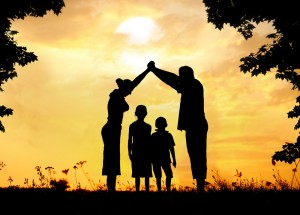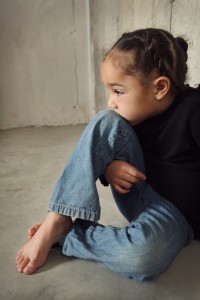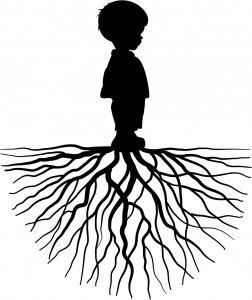
The media is filled with stories about traumatised children and adolescents, such as the school shootings at Sandy Hook and Columbine. However, a range of more common traumatic events, such as accidents and caregiver maltreatment, receive less attention.
We sought to understand how common traumatic experiences are in the lives of U.S. youths by conducting a study examining trauma exposure and PTSD in the National Comorbidity Survey Replication Adolescent Supplement (NCS-A), a nationally-representative sample of 6,483 adolescents aged 13-17. This study is the largest population-based study examining trauma exposure and PTSD in U.S. youths, and the findings reveal trauma and PTSD are significant public health problems in this population.
Trauma Exposure is Pervasive among U.S. Youths

62% of teenagers have experienced at least one traumatic event in their lifetime
A majority of U.S. youths have experienced a traumatic event by the time they reach adolescence. Sixty-two percent of teenagers have experienced at least one traumatic event in their lifetime, including interpersonal violence, serious injuries, natural disasters and death of a loved one, and 19 percent have experienced three or more such events. The prevalence of trauma exposure among children and adolescents is nearly as high as the prevalence in adults based on similar population-based studies.
Traumatic Events do not Occur at Random
Some types of trauma occur more frequently to younger children, including physical abuse by a caregiver, witnessing domestic violence, and kidnapping. Approximately half of all children who will experience these types of trauma in their lifetime have been exposed before the age of 8. Other traumatic events happen more often to adolescents, including car crashes, rape and sexual assault, physical assault by non-family members, and unexpected death of a loved one.

Family structure and history of mental illness are strongly related to trauma exposure in children and adolescents
Family structure and history of mental illness are strongly related to trauma exposure in children and adolescents. Youths not living with both biological parents are at elevated risk of experiencing a wide range of traumatic events, most notably events involving interpersonal violence. Adolescents with a history of disruptive behaviour disorders, including attention-deficit/hyperactivity disorder (ADHD), oppositional defiant disorder, and conduct disorder, are more likely than other teenagers to experience traumatic events involving interpersonal violence as well as accidents and injuries. In contrast, adolescents with a history of anxiety disorders and depression are more likely to report experiencing traumatic events occurring to loved ones and to be the victims of interpersonal violence that occurs within the context of romantic relationships, including both physical and sexual violence.
PTSD is Common in U.S. Children and Adolescents
Nearly 5% of U.S. youths have developed PTSD by adolescence, and those experiencing events involving interpersonal violence—including rape, sexual assault, and physical abuse by caregivers or romantic partners—have the highest risk of PTSD onset.

Girls are more than 3 times as likely to develop PTSD, compared to boys
Females are more than three times as likely to develop PTSD as compared to males. Although females are more likely to experience certain types of traumatic events that strongly predict the onset of PTSD, such as rape and sexual assault, females remain more than twice as likely as males to develop PTSD even after accounting for these types of differences in traumatic event exposure. The factors that explain this greater risk for PTSD among females are not well understood and are an important area for future research.
Greater vulnerability to PTSD is also associated with a history of prior traumatic events and mental illness. Youths who experienced a high number of previous traumatic events are more vulnerable to developing PTSD than those who are experiencing trauma for the first time, suggesting that earlier trauma may sensitise children and adolescents to the effects of subsequent traumatic events. In addition, adolescents with a history of anxiety and mood disorders are almost twice as likely to develop PTSD following a traumatic event than youths without a prior mental disorder.
Predictors of PTSD Onset Differ from Predictors of Course of Illness
Most adolescents who develop PTSD recover from the disorder, although approximately one-third experience a more chronic course of illness that can last many years.Identifying factors that predict a chronic course is important to allow clinicians to deliver more intensive interventions for children and adolescents with PTSD who are least likely to recover spontaneously. Factors that predict chronic course of PTSD differ from those that predict onset of the disorder. Specifically, adolescents living in poverty, those with comorbid bipolar disorder, and those who experienced additional traumatic events occurring after the trauma that triggered the onset of PTSD are least likely to recover from PTSD.
What Can be Done to Protect Children and Adolescents from PTSD?
Together, these findings suggest that interventions designed to prevent the onset of PTSD among youths who have experienced a traumatic event should target children and adolescents who have:
- Been the victims of interpersonal violence,
- Have experienced a high number of cumulative lifetime traumas, and
- Have a pre-existing anxiety or mood disorder.
Findings on chronicity suggest that clinical interventions should specifically target these groups and should be augmented with efforts to reduce exposure to additional traumatic events.

Multi-faceted solutions are needed to protect children from trauma and help prevent PTSD
Protecting children and adolescents from experiencing trauma and developing PTSD will require multi-faceted solutions involving parents, teachers, medical professionals, community leaders, law enforcement officials, and policy-makers. On one level, we can protect our children by working to prevent trauma exposure in the first place by improving access to high-quality child care for working families and single parents, strengthening formal and informal supports at the neighbourhood-level to promote community supervision and protection of children, and increasing opportunities for access to high-quality after-school programs and structured activities outside of school. These types of strategies may help to prevent exposure to the most pernicious forms of trauma involving interpersonal violence.
However, no approach will prevent all children and adolescents from experiencing trauma. For that reason, it is also critical to implement better strategies for screening and identification of trauma-exposed youths who would benefit from clinical services before they have developed PTSD. Recent studies indicate that PTSD onset can be prevented with psychosocial intervention in children who have experienced a traumatic event, suggesting that improving systems for early identification to connect youths with these types of services could have a meaningful effect in preventing the onset of child and adolescent PTSD.
Finally, the provision of evidence-based treatments for youths who develop PTSD is essential. Substantial evidence supports the efficacy of cognitive-behavioural treatments for children and adolescents with PTSD, and increasing training and supervision in these evidence-based approaches for mental health professionals working with trauma-exposed youths will ensure access to high-quality treatments for those in need of services.
Combining PTSD treatments with interventions designed to prevent exposure to additional traumatic events will have the greatest impact on reducing the population burden of child and adolescent PTSD. To find out more about child trauma exposure and PTSD, click here.
Acknowledgements
A special thank you to Dr. Karestan Koenen for her support of this research and feedback on this post.
This blog originally appeared on Eva Alisic’s excellent Trauma Recovery website. Thanks to Eva for giving us permission to reproduce the blog here.
Link
McLaughlin, Koenen, Hill, Petukhova, Sampson, Zaslavsky, & Kessler (2013). Trauma Exposure and Posttraumatic Stress Disorder in a National Sample of Adolescents Journal of the American Academy of Child & Adolescent Psychiatry, 52 DOI:10.1016/j.jaac.2013.05.011


Traumatic events do not occur at random: The media is filled with stories about traumatised children and adole… http://t.co/iLCVMvsWvg
Traumatische gebeurtenissen bij kinderen komen niet geheel willekeurig voor. Maakt #preventie mogelijk. #ggz http://t.co/5dz0R2WZlu
What if UK youth were similarly affected?
This is a very, very important story; thank you for your work. I am curious, though, about your title choice. That is, the article discusses the difficult, unacknowledged everyday traumas many American children experience, versus the random mass killings that make the news. For that reason, wouldn’t this language or something like it (from later in the article) be more appropriate and useful to the (potential reader): “Trauma Exposure is Pervasive among U.S. Youths”?
I’d appreciate your thoughts.
Thank you.
Thanks for @EvaAlisic for sharing today’s blog on #PTSD in children & young people by Dr. Katie McLaughlin http://t.co/Ai5rfgIYKl
@Mental_Elf My pleasure :-) Many thanks to Katie!
Traumatic events do not occur at random http://t.co/2tysF0G6nB Childhood trauma and Mental Health #ptsd
62% of US teenagers have experienced at least one traumatic event in their lifetime http://t.co/Ai5rfgIYKl
Family structure and history of mental illness are strongly related to trauma exposure in children & adolescents http://t.co/Ai5rfgIYKl
@mental_elf ty for sharing this
US:The horror of the quotidian-Trauma Exposure is Pervasive among Children, Youths| @Mental_Elf http://t.co/dwPbJJRH8d #trauma #mentalhealth
Girls are more than 3 times as likely to develop #PTSD, compared to boys http://t.co/Ai5rfgIYKl
RT @Mental_Elf: Multi-faceted solutions are needed to protect #children from #trauma and help prevent #PTSD http://t.co/Ai5rfgIYKl
In case you missed it earlier, a debut @Mental_Elf blog from Kate McLaughlin: Traumatic events do not occur at random http://t.co/Ai5rfgIYKl
Traumatic events do not occur at random http://t.co/IKNfeyKq8u #counselling
Interesting findings on trauma. I would be curious to know how the phenomenon of trauma was conceptualised in this study.
Traumatic events do not occur at random http://t.co/EAEUl3hkfE via @sharethis Interesting findings on the prevalence & nature of trauma
Population based study in @JAACAP explores common traumatic experiences in the lives of US youths http://t.co/Ai5rfgIYKl
Mental Elf: Traumatic events do not occur at random http://t.co/eHS690Wb69
US: Trauma Exposure is Pervasive among Children, Youth | @Mental_Elf http://t.co/dwPbJJRH8d #trauma #mentalhealth #SDOH #health
@HerHealthySelf @Mental_Elf Exposed too early – not allowed childhood